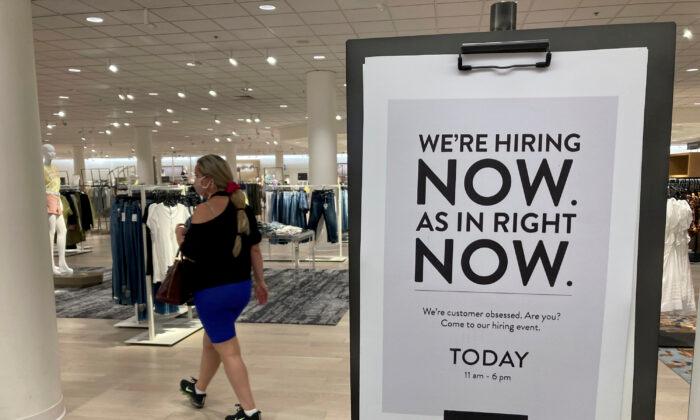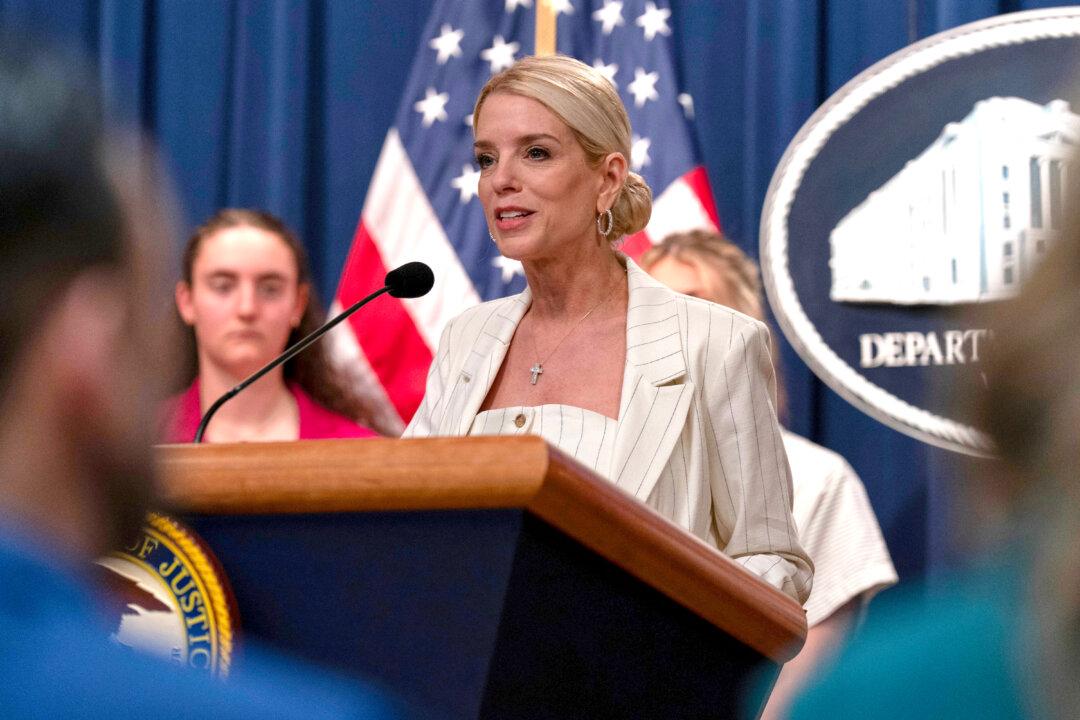The number of U.S. workers who filed for unemployment rose above expectations last week, hitting the highest level in over a month and casting doubt on the strength of the labor market recovery.
“Negative surprise alert: New jobless claims have risen for a third straight week,” Bankrate Senior Economic Analyst Mark Hamrick told The Epoch Times in an emailed statement.
Initial jobless filings have, for the most part, fallen steadily since surging to a record high of 6.2 million in April 2020, though they remain well below the pre-pandemic weekly average of around 220,000.
“The latest increase confounded hopes for improvement. It appears to have been spurred, at least in part, by rising claims in the states of California and Michigan,” Hamrick said.
The largest increases in advance initial claims, which are not seasonally adjusted, were in California (+86,792), Texas (+20,206), and Michigan (+18,727), according to the report.
The expiration of federal pandemic aid programs was also reflected in the numbers, which showed a total of five million Americans receiving some form of jobless assistance in the week ending Sept. 11, marking a weekly decline of over 6.2 million.
Federal Reserve chair Jerome Powell said at a European Central Bank event that resolving “tension” between high inflation and still-elevated unemployment is the most urgent issue facing central bank officials right now.
“This is not the situation that we have faced for a very long time and it is one in which there is a tension between our two objectives. ... Inflation is high and well above target and yet there appears to be slack in the labor market,” Powell said at a European Central Bank forum, with his remarks appearing to point to a 1970s-style stagflationary dynamic.
Surging prices have been a headline theme amid the economic recovery, rising faster than wages and eroding the purchasing power of Americans.
Stephen Roach, former Morgan Stanley Asia chairman, on Wednesday became the latest high-profile economist to sound the alarm on the risk of a 1970s-style stagflation—where economic growth falls but inflation stays stubbornly high.
Roach told CNBC in a Sept. 29 interview that the energy price spike is inflicting major damage to struggling supply chains and that he believes the United States is “one supply chain glitch” away from a 70s-era bout of stagflation.
While Fed officials have expressed concern about price pressures, they predict that the high rate of inflation is a transitory phenomenon.





